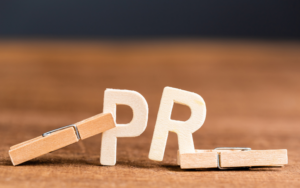Companies have plenty of very valuable opportunities on LinkedIn through the advertising platform where they can expand their reach, guide people throughout the buying journey, and utilize the native lead forms.
However, before a company can create campaigns that will be focused on generating more conversions, it first needs to inform the platform about which events it wants to track and target.
Generating LinkedIn Leads
To get access to conversion tracking on LinkedIn, companies need to find their way to the LinkedIn Campaign Manager and look at the assets under their account. Then, they can create new conversions for every step of the buying journey of the customers. For example, companies can track their subscriptions, trial periods, leads, sign-ups, and more. In fact, companies can also use this tool to track phone calls and add clicks.
Content for the Beginning of the Buying Journey
At the start of the buying journey of the customers, companies should be focused on creating and publishing organic content that is going to tell potential customers about the business and its solutions, and introduce all of those elements to the audience. Instead of giving the audience a lot of details, companies should focus on creating more short-form content that’s going to educate, entertain, as well as engage the audience.
During the beginning stages of the buying journey, it’s also smart for companies to start teasing any product launches that are coming up soon, or generate more awareness about new features they’ve introduced recently.
Whether a company decides to create a text-based post on the platform, or produce an entire video, the goal should be to give the target audience a basic overview of the business and its solutions instead of a detailed guide about all of the different products and features they have.
Additionally, companies can also automate a big element of the content creation process by creating the content in batches, and then scheduling each piece so it can be automatically published through any of the third-party social media tools that are integrated with LinkedIn.
It’s important to remember that companies need to look at their page analytics so they can figure out the best times when they should share content, and then schedule their previously made content to be published during the best times. It’s also smart to alternate between content that’s going to generate more awareness with potential customers and content that’s going to lead people to the next stages of the buying journey.
Boosting Content
Any content that companies create for the beginning stages of the buying journey could end up reaching thousands of people as long as the company’s page on the platform has a large number of followers, or if the posts are shared to the personal feed of the owners or employees.
However, companies that are serious about developing their buying journey should also be investing in boosting their best-performing content for the beginning stages of the buying journey.
This way, businesses can get to reach a lot more people from their target audiences, while still adding new people to the overall buying journey. Companies can identify the content that’s been performing well through the analytics on LinkedIn, and then all they need to do is click the Boost button to promote that content.
Businesses should be choosing the “Increase awareness” objective so they can get the most impressions, or the “Get engagement” objective so they can generate more comments and reactions to that piece of content.
The next step is to choose the target audience. For the target audience, companies can decide to reuse any of the existing saved audiences that have been used in the past or set brand new targeting parameters that will be based on the group memberships or professional profiles of the users on the platform.
It’s important to remember that if a company wants to build a brand new audience using either first or third-party data, it needs to go through the LinkedIn campaign manager instead of simply boosting the content from the page of the business.
Generating LinkedIn Conversions
The middle stages of the buying journey require companies to create different types of content compared to the beginning or the ending stages.
Middle Stages of the Buying Journey
The potential customers that have managed to get past the “familiarizing themselves” stage with the business are now at a point where they understand what the company does and have a general idea of how the company’s solutions can help them.
However, they won’t know all of the necessary details so they can convert, and they still haven’t been convinced that what the company provides is the best option available for them.
That’s why, during this stage, most potential customers are still looking out for potential solutions for their pain points and researching their options.
To cater to potential customers during this stage of the buying journey companies should be providing the audience with all of the information they might need so they can make a well-informed decision.
That means creating more detailed content that’s going to show potential customers how the company solutions can help them, how the solutions have worked out well for other past customers, or even sharing research that’s going to show the business as the best possible choice for their needs.
While during this stage text-based content can be very helpful and informative, to generate more engagement companies should be creating multimedia content. That means creating content that’s going to encourage potential customers to answer a poll on LinkedIn, click a link to an external page, watch a video, or even swipe through a carousel.
All of these different post formats drive more interactions with potential customers, which then tells the social media platform’s algorithm that the people that interact with the content should be seeing more of the company’s content in the future.
Additionally, this type of interactive content can also help companies build audiences that will be based on activity that can be re-targeted later, and automatically guide other potential customers further down the buying journey.
Automating Retargeting
Most potential customers need to see the companies contact several different times before they are able to make a purchasing decision or move further down the buying journey.
Although the precise number of times they need to see the business and its contents tends to vary by product and industry, 8 touch points seem to be a general number. Those eight touch points that companies have with potential customers can include the organic content that our business creates for the target audience or ads from a promotional campaign.
Companies that want to accelerate the buying journey for their customers should be using the LinkedIn campaign manager to create consideration-focused campaigns.
By using retargeting audiences companies can guide potential customers through personalized series of touch points from the business that will be designed to cater to their specific needs.
Depending on the value that the company provides the potential customers, as well as their awareness level of the business, companies can decide to add more or remove any of the touch points from this campaign.
Mike Paffmann is the CEO of Virgo PR. He has previously worked as a Vice President at Clarity PR, 5WPR, and Highwire PR.
Virgo PR is a full-service digital marketing and digital PR agency that caters to clients in all industries. Paffmann has over a decade of experience in the public relations industry and has provided diverse media relations programs for brands and corporations across enterprise, software, eCommerce, technology, and consumer apps of all sizes. He has worked with clients including IBM, Genies, Glint, Rebel Ventures, AppAnnie, Owl Labs, car2go, Vkanesee, and more.




